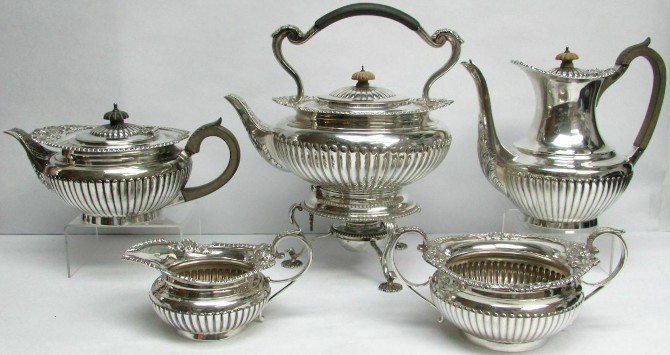A tea service, or tea set, is a set of items used for serving and preparing tea. There is no set standard for what specific items are included in a tea service. Different cultures have different items that are included.

The first English tea services included a tea pot, a sugar bowl, and a creamer jug. These three-piece silver services were introduced in England around 1790. Earlier examples do exist but they are very rare. Coffee pots were added in the latter part of the George III era (r. 1760-1820). It wasn't until years later that the six-piece tea service was introduced which included a kettle and a waste bowl.
After 1850 there were more tea services available and more styles available. Therefore it's assumed that tea services reached peak popularity in the Queen Victoria era (1837-1901). A lot of styles from this era are now sought after by collectors. During this time a lot of sets were richly chased and embossed. The elaborate ornamentation took away from the original shape of the pieces.
Collectors may find it difficult to find matching pieces. But a true antique silver collector will not object to a set that doesn't match. There was never a defined number of pieces per set, so therefore it's within a collector's right to create a set with assembled pieces. Oftentimes silversmiths are asked to make modern pieces to complement an antique set of three.
The earliest English tea services were made of silver. Some of the later models were made of Sheffield plate or silver plate.
Value
Antique silver tea services are rare and they can sell for hundreds of dollars. Some early sets can sell for over $1,000. Other rare sets can sell for over $10,000. The value will depend on the set. Antique silver plated sets can also be valuable.
Sources:
The Book of Old Silver
See also:
